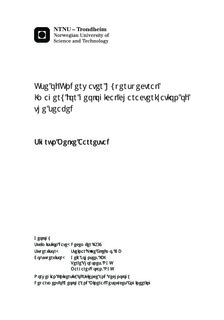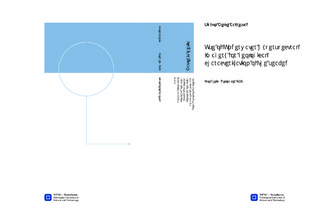| dc.description.abstract | This master s thesis presents an optical mapping method, Hyperspectral Imaging (HI) and its application to marine geological mapping - Underwater Hyperspectral Imaging (UHI). UHI uses similar technology as terrestrial HI to detect and identify objects on the seafloor by their optical signatures (reflectance spectra) in visible light (400-700 nm). The main aim of the thesis is to determine properties of marine sediments that can be detected and identified by UHI, and secondly to evaluate its applicability in context of established mapping methods in marine geology. The thesis focuses on carbonate content in marine sediments and the potential use of UHI for mapping and monitoring bioclastic carbonate sediments and other carbonate deposits on the seabed.
The work is based on literature studies of established marine geology mapping methods, previous work on geological HI and the development of UHI, in addition to new laboratory work. Spectral reflectance of different minerals, marine sediments with varying carbonate content and carbonate crusts were measured. A hyperspectral imager attached to a stereomicroscope was used to capture spectral reflectance from the samples and to create hyperspectral images. A Jaz spectrometer was used to validate the reflectance spectra obtained from the hyperspectral images.
Both the HI and the Jaz results showed reflectance spectra of dry samples and samples submerged in seawater. The two spectrometers showed relatively similar results, apart from the red (>600 nm) and blue (<500 nm) parts of the spectra, indicating that the Jaz spectrometer has better sensitivity than the HI spectrometer. Supervised classification of hyperspectral images showed that it is possible to classify the samples by their optical signature.
This study shows that UHI can supplement marine geological mapping with remotely sensed geochemical data of high resolution. UHI can detect geochemical properties such as changes in carbonate content based on the whiteness of the sediment, and iron and organic content based on spectral absorption features. Variations in grain size can be detected by varying reflectance intensity. Challenges include detection of marine minerals with absorption features only in the ultraviolet and infrared part of the electromagnetic spectrum. Such minerals include calcite and aragonite, thus UHI classification of carbonate deposits on the seabed has its limitations. | |

